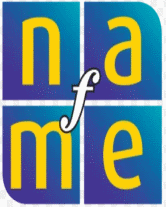Standard 1b
Singing, alone and with others, a varied repertoire of music: Students sing expressively, with appropriate dynamics, phrasing, and interpretation.
At the beginning of a class, students sing a lullaby that is familiar to them, "All thePretty Little Horses"; the teacher tapes the singing. He asks the students to describea lullaby: What kind of song rocks a baby to sleep? He sings "All the Pretty LittleHorses" again, loudly and at a quick tempo, and asks students to "find what's changed."Using their answers, he lists "dynamics" and "tempo" as headings on the board. Forolder children, he may list specific terms beneath them (e.g., "fortissimo" under dynamics). He provides additional intentionally contrasting examples, including singing thesong with changes in phrasing. Students identify and describe his "different ways," andhe adds the word "phrasing" to the headings on the board.
In cooperative groups of four or five, students practice their own versions of "All thePretty Little Horses" with attention to dynamics, tempo, and phrasing. The teacherencourages them to use the information they have about lullabies to develop their owninterpretations. After five minutes, the small groups perform for the class. At the end ofeach performance, their fellow students describe something they liked about the performance, using musical terms.
Students then make similar decisions for a class performance of "All the Pretty LittleHorses." They list class decisions about dynamics, tempo, and phrasing or write theminto the music and then perform the song. The teacher makes a second tape recording.To check for understanding, the teacher plays both class recordings of "All the PrettyLittle Horses" and asks the students to write in their music journals about the differencesbetween their performances at the beginning and end of the class. As they finish, the students share with each other what they have learned about expressive singing.
The instructional activity is successful when:
- The students identify ways in which a performance of a song can be made more expressive
- The students apply what they know about expressive singing to the performance of a song
- The students identify differences in their own interpretations of a song at different times
Excerpted from Teaching Examples: Ideas for Music Educators.

| Provided in partnership with NAfME |



